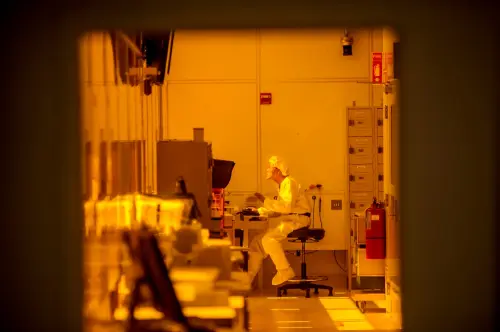Artificial intelligence (AI) and similar technologies are expected to transform business, consumption, and work. Concerns about the destruction or displacement of jobs are growing. By some estimates, over 40% of current jobs may be eliminated within the next decade or two.
The most attention-grabbing forecasts implicitly assume near-immediate adoption of labor-eliminating technologies by firms seeking rapid efficiency gains and cost savings. But technological adoption will likely be much more uneven. Some sectors will quickly adopt these technologies; many will move more slowly. Some of these variations in adoption rates will reflect differences in transition costs facing firms. Incorporating AI technologies into existing processes is often a complex task. Firms will have to find and train workers with the right skills to complement these technologies. Business leaders also have to trust that the new technologies will be reliable.
The fear factor
Adoption rates of technology are influenced not just by economic calculations, however. Barriers to adoption also include social norms and attitudes among potential consumers and other users. Witness the response to a recent spate of high-profile failures of AI technology. Many AI-enabled advances hold out the promise—or, to some, the threat—of profoundly changing the way we live and work. Change naturally inspires anxiety, but recent high-profile accidents involving AI-controlled autonomous cars and airliners may have raised the fear factor. Over 70% of drivers would be too afraid to ride in autonomous vehicles, up from about 60% in 2017, according to the AAA annual survey of members. The organization attributes this increase to the publicity associated with accidents. But it is potentially a harbinger of the way that technology may outpace the shift in attitudes required for its widespread adoption, especially in consumer markets. Notably, this fear was not confined to older drivers, with 64% of millennials reporting similar aversion to these vehicles. Roughly two-thirds (63%) of U.S. adults also report they would actually feel less safe sharing the roads with self-driving vehicles while walking or riding a bicycle.
Driverless cars are but one example of consumer anxiety. Three in five Americans say they would be uncomfortable with having a robot caregiver for themselves or a family member, according to recent research by Pew Research Center. (Whether this number should be considered high or low may depend on your own perspective). A higher number (76%) said they would not want to apply to a job where computer algorithms were being used to evaluate and select applicants. Of course, the latter statistic is likely to reflect broader worries about job market prospects in a world with advanced AI. A clear majority (65%) of Americans believe that AI will eliminate jobs currently done by humans in the next five decades. Just one in four believe that technology will lead to the creation of “new, better-paying jobs.”
Social attitudes will clearly influence how quickly companies will be able to take advantage of new technologies. A good example here is the response to driverless trucks. Experts and businesses seem to agree that the future of logistics will rely on driverless trucks that can move autonomously from hub to hub. Waymo, the former Google self-driving vehicle project, recently began experimenting with self-driving vehicles to deliver goods and to move freight. But Waymo vehicles were attacked and vandalized as they moved through the streets of Phoenix. While few will turn to crime, this behavior may reflect the broader concerns that many Americans have about the role of AI and how it will affect workers and families in the future. Businesses will have to overcome this resistance by building trust and highlighting the benefits to society. However, at least in some cases, this will likely prove difficult.
Norms as brakes
The frictions facing businesses in terms of their direct transition costs (economics) and the possible unwillingness of consumers to engage (social norms), mean that the AI revolution, and the related effect on the labor market, will not be complete any time soon. Invention and implementation typically run on different schedules, and the survey evidence suggests that firms have a long way to go.
Given that this change will likely proceed more slowly than initially expected, we have an opportunity to prepare better. We should be acting now to get the policies in place by investing in education, fostering innovations in reskilling, and strengthening our social safety net. This in turn should allow us to face the future with confidence rather than consternation.
The Brookings Institution is committed to quality, independence, and impact.
We are supported by a diverse array of funders. In line with our values and policies, each Brookings publication represents the sole views of its author(s).





Commentary
Putting on the brakes: How technology may be slowed by social norms
May 10, 2019